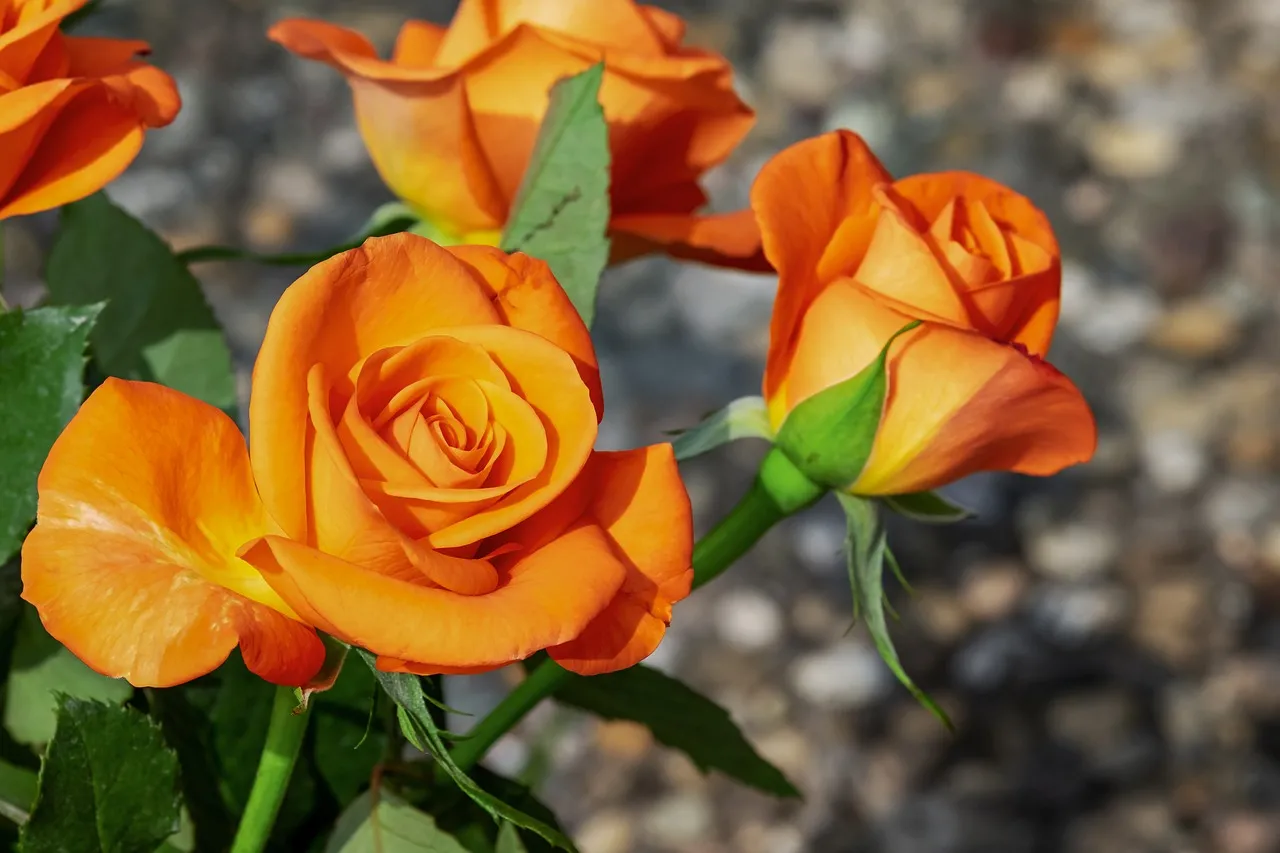In the tapestry of nature’s wonders, few blooms stand as timeless emblems of beauty and romance as the rose. With its enchanting fragrance and captivating allure, the rose has been a cherished symbol for centuries, gracing gardens, adorning bouquets, and playing a starring role in special occasions. Beyond its aesthetic appeal, the rose carries profound meanings, symbolizing love, passion, and the timeless essence of beauty.
Embarking on the journey of cultivating healthy roses invites enthusiasts into a realm where gardening transcends mere horticulture, requiring a delicate blend of knowledge, attentive care, and a touch of artistry. This comprehensive guide aims to be your compass through this botanical adventure, offering essential tips and tricks that will empower you to nurture robust and vibrant roses within the sanctuary of your own garden.
As we delve into the nuances of rose cultivation, we’ll unlock the secrets behind successful rose gardening, from the selection of the perfect varieties to understanding the intricacies of planting, pruning, and providing the optimal growing conditions. Through this exploration, you’ll discover that growing healthy roses is not just a science but an art form—a dance between nature’s rhythms and the gardener’s keen sensibility.
So, whether you’re a seasoned rose enthusiast or a budding gardener looking to add a touch of elegance to your landscape, join us on this journey as we navigate the fragrant world of roses. Together, we’ll unravel the mysteries, embrace the challenges, and revel in the rewards of cultivating a garden adorned with the timeless beauty of flourishing roses.
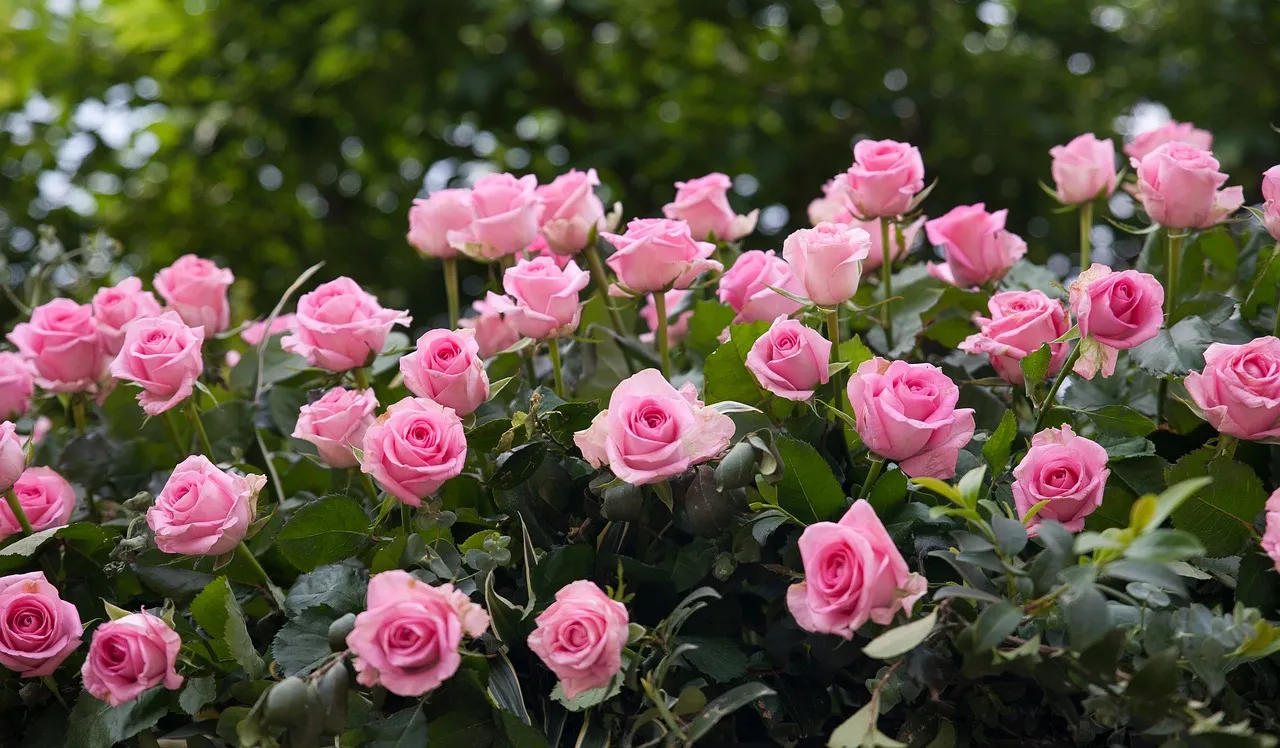
Exploring the Diverse Varieties of Roses
Roses come in a wide variety of species, hybrids, and cultivars, each with its unique characteristics, including color, fragrance, size, and growth habits. Here are some popular varieties of roses:
Hybrid Tea Roses:
Known for their large, high-centered blooms, hybrid teas are one of the most popular types of roses. They come in a variety of colors and are often used as cut flowers.
Floribunda Roses:
These roses produce clusters of flowers on each stem, creating a profusion of blooms. Floribundas are known for their hardiness and continuous flowering throughout the season.
Grandiflora Roses:
A cross between hybrid teas and floribundas, grandifloras produce large, elegant blooms on tall stems. They combine the best qualities of both parent types.
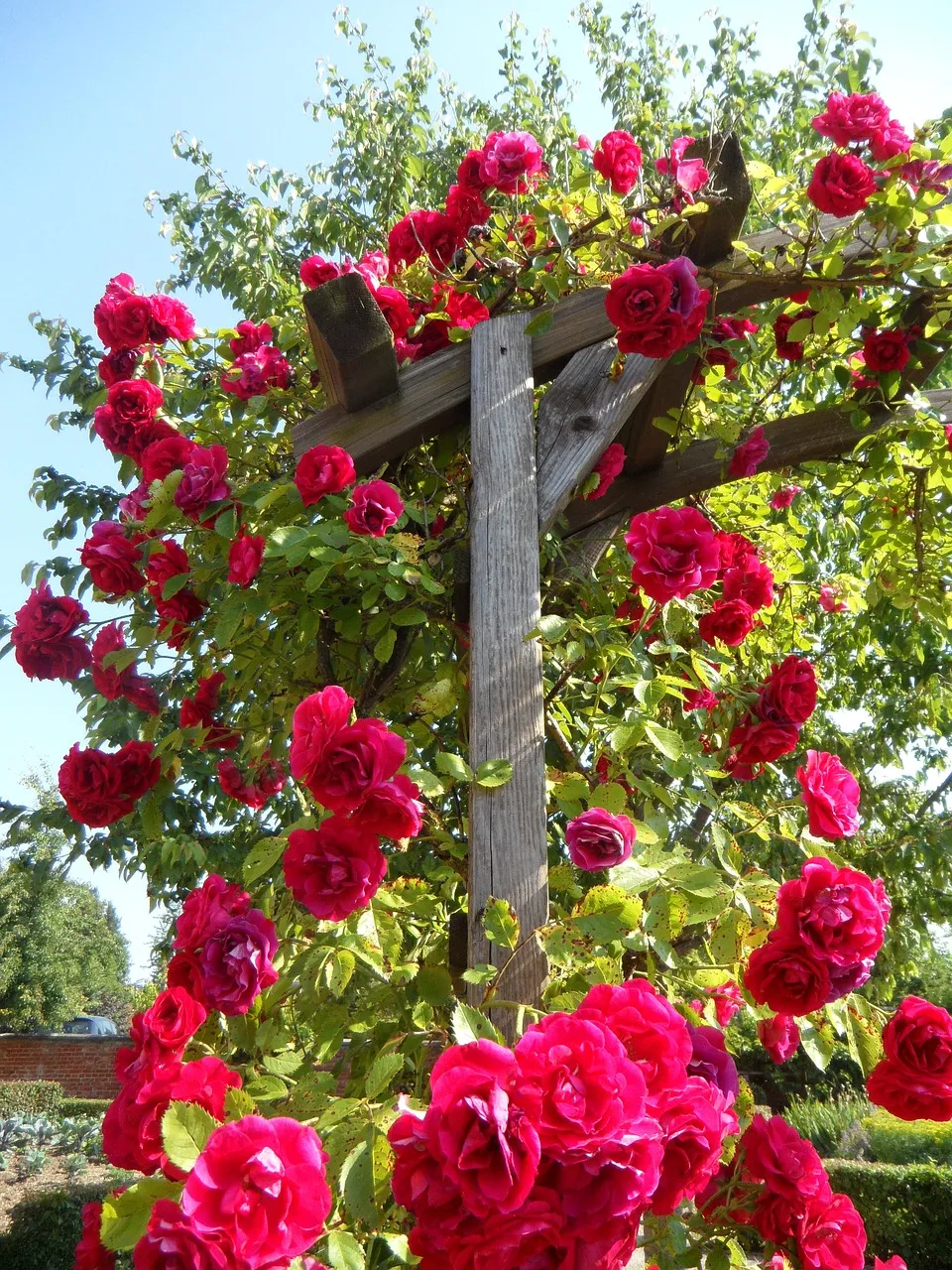
Climbing Roses:
These roses are characterized by their long, flexible canes that can be trained to climb walls, trellises, or arbors. They come in various flower forms and are great for vertical gardening.
Shrub Roses:
Hardy and versatile, shrub roses come in a range of sizes and shapes. They are well-suited for landscaping and can be used as hedges or in mixed borders.
Miniature Roses:
These small-sized roses are perfect for containers, small gardens, or as edging plants. Despite their size, they often produce blooms similar to larger rose varieties.
Groundcover Roses:
Low-growing and spreading, groundcover roses are ideal for mass plantings, erosion control, or as a colorful carpet in the landscape.
Old Garden Roses:
This category includes roses that existed before the introduction of hybrid teas in the 19th century. They are often known for their fragrance, diverse flower forms, and historical significance.
David Austin Roses (English Roses):
Bred by David Austin, these roses combine the charm and fragrance of old garden roses with the repeat-flowering characteristics of modern roses.
Knock Out Roses:
Known for their disease resistance and continuous blooming, Knock Out roses are popular for low-maintenance gardens.
Tea Roses:
A group of roses, including the original Tea Rose, known for their fragrance and elegant, pointed buds.
Wild Roses:
The species roses that are found in the wild, like the Rosa rugosa, with its wrinkled leaves and colorful hips. Rugosa Roses known for their tough and hardy nature, as well as their distinctive wrinkled leaves and vibrant flowers.
Choosing the Right Rose Varieties
Choosing the right rose varieties is a pivotal step in creating a garden that blossoms with vibrancy and beauty. The diverse world of roses offers a plethora of options, each with its unique characteristics, colors, and growth habits. To ensure a successful and harmonious garden, consider the following factors when selecting the perfect rose varieties:
Climate Compatibility:
Roses, like many plants, thrive in specific climate conditions. Different varieties are adapted to various temperature ranges, so it’s crucial to choose roses that are compatible with your local climate. Whether your region experiences hot summers, cold winters, or a combination of both, selecting roses suited to your climate zone is essential for their overall health and longevity.
Soil Requirements:
Roses exhibit preferences for particular soil types. Before selecting varieties, analyze your soil composition—whether it’s sandy, loamy, or clayey—and choose roses that flourish in those conditions. Well-draining soil is generally favorable for most roses, preventing waterlogged roots and potential diseases.
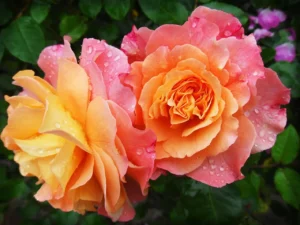
Purpose and Preference:
Define the purpose of your rose garden. Are you looking to create a visually stunning landscape, cultivate roses for cutting and arranging, or fill the air with fragrance? Different rose varieties excel in different areas, so align your choices with your gardening goals and personal preferences.
Growth Habit:
Consider the growth habits of different rose varieties. Some roses are climbers, adding vertical interest to fences or trellises, while others are compact and suitable for borders or container gardening. Understanding the growth habits ensures proper placement in your garden and prevents overcrowding.
Disease Resistance:
Opt for rose varieties known for their disease resistance, especially if you prefer low-maintenance gardening. Some roses are naturally more resistant to common diseases like black spot or powdery mildew, reducing the need for frequent treatments and interventions.
Complementary Colors and Fragrance:
Plan your rose garden with an eye for aesthetics. Choose varieties that complement each other in terms of color, creating a visually appealing and harmonious display. Additionally, consider the fragrance of the roses, as different varieties emit various scents, adding another layer of sensory delight to your garden.
Local Recommendations:
Consult local nurseries, gardening clubs, or botanical gardens for recommendations on rose varieties that thrive in your specific region. Local expertise can provide valuable insights into the challenges and successes of growing particular roses in your area. By thoughtfully considering these factors, you can tailor your rose selection to match the unique conditions and preferences of your garden. Ultimately, choosing the right rose varieties lays the foundation for a flourishing and visually enchanting rose garden that will bring joy and beauty throughout the seasons.
Ideal Growing Conditions
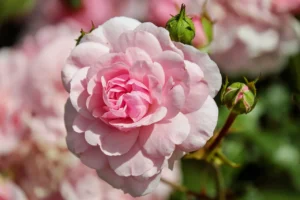
Roses flourish when provided with optimal growing conditions. Here are key considerations:
Sunlight: Roses generally need at least six hours of sunlight daily. Choose a sunny location with well-draining soil to encourage healthy growth.
Watering: Provide consistent moisture without overwatering. Deep watering at the base of the plant is preferable to promote robust root development.
Air Circulation: Proper spacing between rose bushes is crucial for good air circulation, reducing the risk of diseases like powdery mildew.
Planting and Pruning Techniques
Successful rose gardening involves proper planting and regular pruning. Follow these guidelines:
Planting Depth: Plant roses at the correct depth, ensuring the graft union is just above the soil surface. This prevents diseases and encourages strong root development.
Pruning: Regular pruning helps shape the plant, remove dead or diseased wood, and stimulate new growth. Learn the basics of pruning, including when and how to do it for different rose types.
Soil Preparation and Fertilization
Healthy roses start with nutrient-rich soil. Consider these tips:
Soil Amendments: Incorporate organic matter such as compost to improve soil structure and fertility.
Fertilization: Use a balanced fertilizer formulated for roses, applying it according to package instructions. Adjust feeding schedules based on the rose’s growth stages.
Disease and Pest Management
Disease and pest management in the context of plants, including roses, involves strategies and practices aimed at preventing, controlling, and mitigating the impact of diseases and pests. Both diseases and pests can adversely affect the health and vitality of plants, leading to reduced yield, poor quality, and sometimes plant death. Here’s an overview of disease and pest management for roses:
Disease Management:
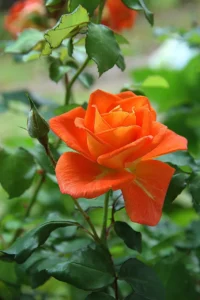
Plant Selection:
Choose disease-resistant rose varieties when planning your garden. Many modern rose cultivars are bred to be resistant to common diseases.
Site Selection and Soil Health:
- Plant roses in well-drained soil with good air circulation to reduce the risk of fungal diseases.
- Maintain optimal soil health with proper fertilization and organic amendments.
Sanitation:
- Regularly remove fallen leaves and debris to eliminate potential sources of disease.
- Prune out and destroy infected plant parts promptly.
Watering Practices:
- Water at the base of the plant to keep foliage dry and reduce the risk of fungal diseases.
- Avoid overhead watering, especially in the evening.
Fungicides:
- Apply fungicides preventively or as soon as symptoms appear, following recommended guidelines.
- Copper-based fungicides are often used for controlling fungal diseases in roses.
Pest Management:
Integrated Pest Management (IPM):
- Adopt an integrated approach that combines biological, cultural, mechanical, and chemical control methods.
- Monitor pests regularly and use the least harmful methods first.
Beneficial Insects:
- Encourage natural predators and parasites of pests, such as ladybugs, lacewings, and predatory mites.
- Plant companion plants that attract beneficial insects.
Biological Control:
Introduce or release natural enemies of pests, like nematodes for controlling soil-dwelling insects.
Cultural Practices:
- Rotate crops to disrupt pest life cycles.
- Use companion planting to repel pests or attract beneficial insects.
Mechanical Control:
- Handpick and remove pests when feasible.
- Use barriers like row covers to prevent pests from reaching plants.
Chemical Control (Pesticides):
- Use pesticides as a last resort and choose products that target specific pests.
- Follow label instructions carefully, and be mindful of the potential impact on beneficial insects.
Quarantine:
- Isolate new plants before introducing them to the garden to prevent the spread of pests and diseases.
Regular Monitoring:
- Regularly inspect plants for signs of pest infestations or disease symptoms.
- Early detection allows for timely intervention and prevents the escalation of problems.
By combining these practices, gardeners can create a comprehensive strategy for managing diseases and pests in their rose gardens while minimizing the impact on the environment and beneficial organisms. Regular observation, proper sanitation, and a proactive approach are key elements in successful disease and pest management.
Mulching and Winter Protection
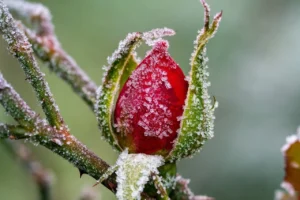
Mulching is a vital gardening practice that involves applying a layer of organic or inorganic material, such as straw, wood chips, or leaves, around the base of plants, including roses. This protective layer serves multiple purposes, including conserving soil moisture, suppressing weed growth, regulating soil temperature, and enhancing soil structure. In addition to these benefits, mulching plays a crucial role in winter protection for roses. A thick layer of mulch around the base of rose bushes helps insulate the soil, preventing extreme temperature fluctuations and providing a protective barrier against cold weather. This insulation is particularly important during winter, as it helps safeguard the rose roots from freezing temperatures and reduces the risk of frost heaving. Proper mulching practices contribute to overall plant health and resilience, ensuring that roses are better equipped to withstand the challenges posed by winter conditions.
Conclusion:
In summary, cultivating a vibrant and thriving rose garden requires a multifaceted approach that encompasses careful attention to disease and pest management, as well as thoughtful consideration of mulching and winter protection strategies. By selecting disease-resistant rose varieties, implementing integrated pest management techniques, and adopting diligent sanitation practices, gardeners can fortify their roses against potential threats. Moreover, the judicious application of mulch not only enhances the aesthetic appeal of the garden but also serves as a guardian during winter, shielding roses from the harsh elements. Together, these practices create a harmonious environment where roses can flourish, bloom, and endure the challenges of the changing seasons. With a commitment to these principles, gardeners can enjoy the beauty and fragrance of their roses year-round, cultivating a garden that becomes a sanctuary for both nature and admirers of these timeless and beloved flowers.
#RoseGardening #GreenThumb
